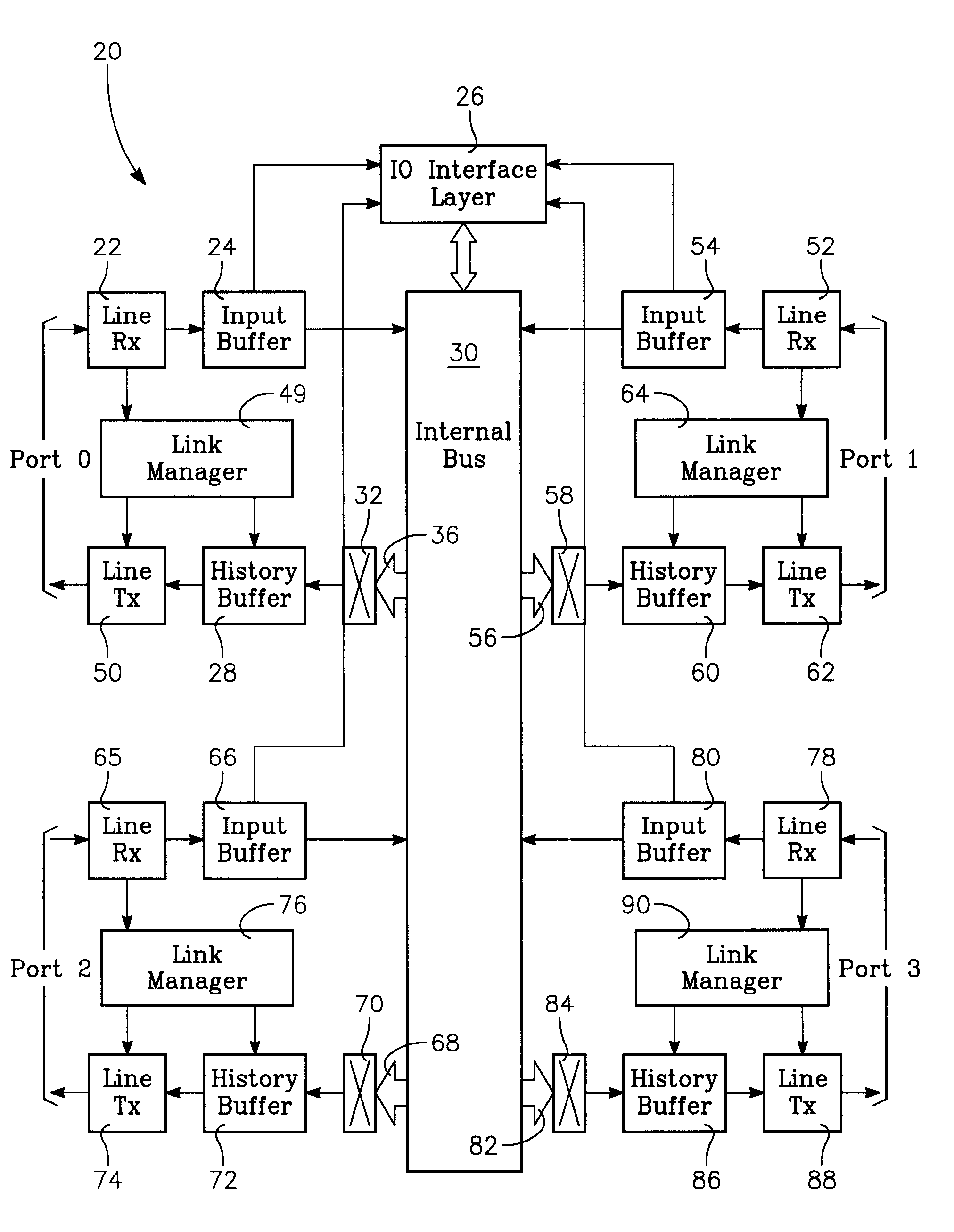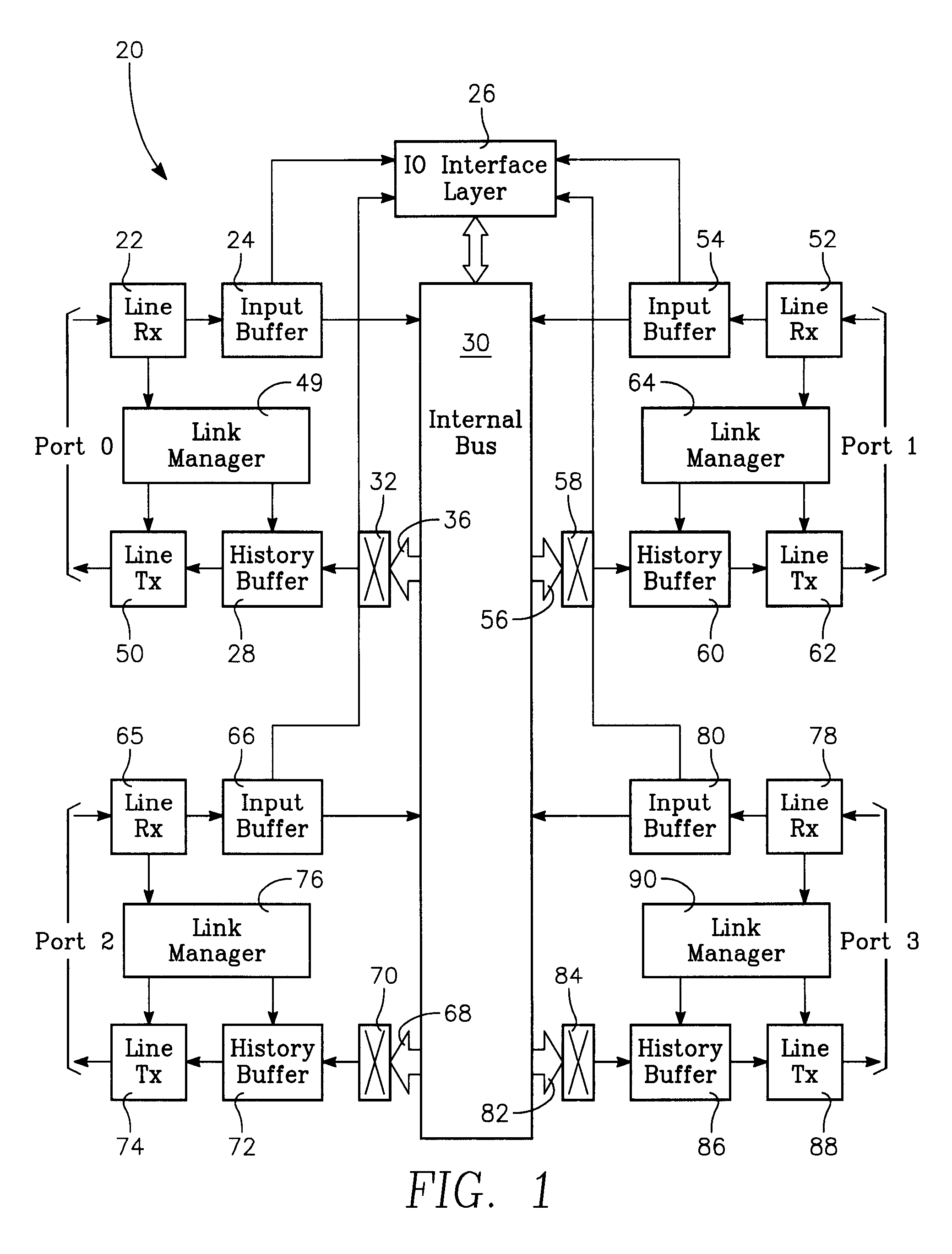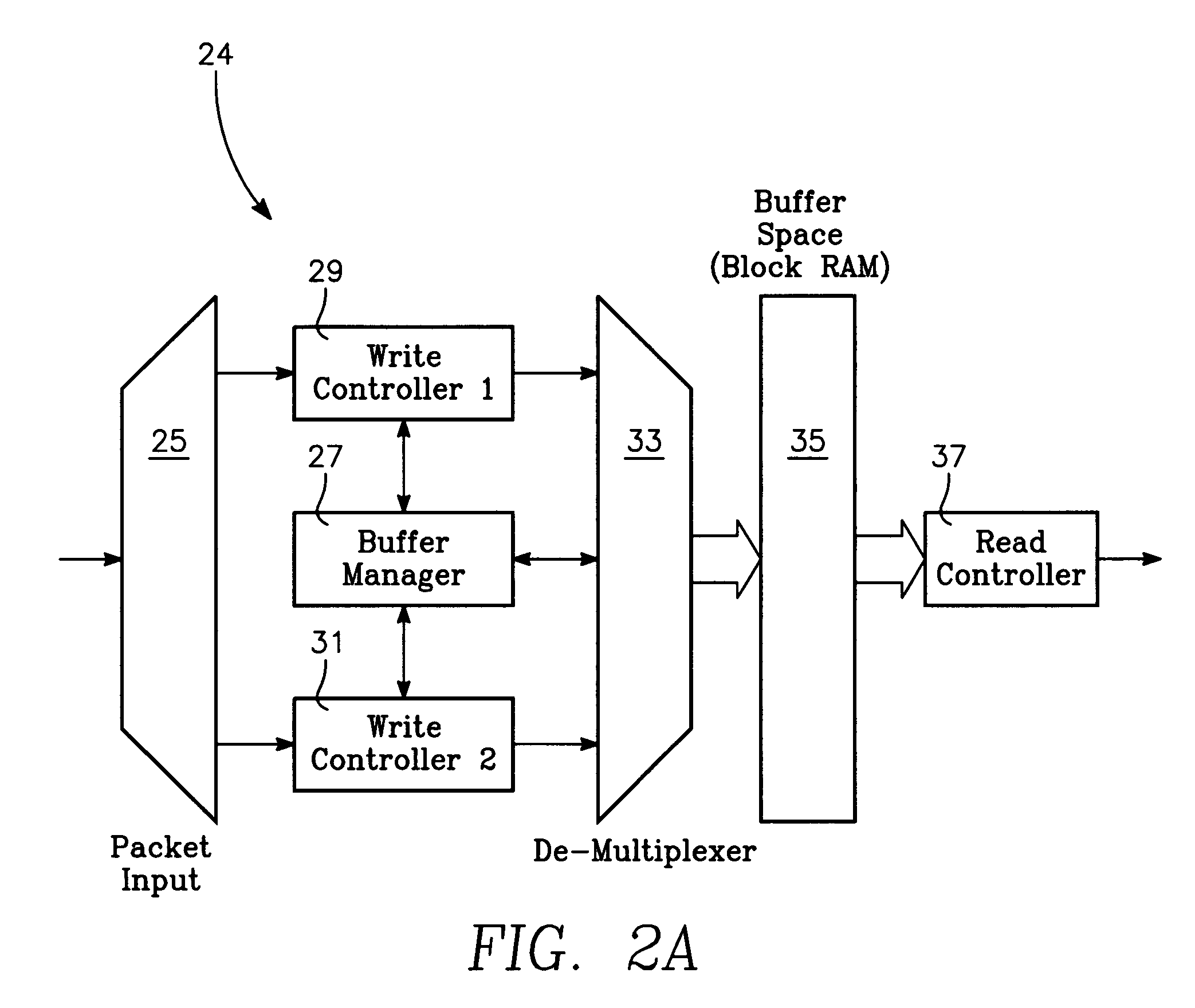Low latency switch architecture for high-performance packet-switched networks
a switch architecture and packet-switching network technology, applied in the field of low-latency switch architecture, can solve the problems of limiting the size of the switching fabric that can be implemented on a single chip, switch architectures using crossbars are simple to build, and still represent bottlenecks in high-performance low-latency networks. , to achieve the effect of low latency
- Summary
- Abstract
- Description
- Claims
- Application Information
AI Technical Summary
Problems solved by technology
Method used
Image
Examples
Embodiment Construction
[0038]The present invention relates to low latency switch architecture, and more specifically, to a low latency switch architecture for high performance packet-switched networks. The switch architecture of the present invention comprises a combination of input buffers capable of avoiding head-of-line blocking at the input ports for the switch and also allows for a packet to be passed the switch fabric on to the output port provided there is a free buffer at the output port. The switch architecture also includes an internal switch interconnect capable of allowing different input ports to access a single output simultaneously.
[0039]Referring to FIGS. 1 and 2, FIG. 1 illustrates the present switch architecture and is identified generally by the reference numeral 20. Switch architecture 20 avoids head-of-line blocking at the input ports for Port 0, Port 1, Port 2 and Port 3, and allows any data packet to be passed through the switch architecture 20 to an output port regardless of how ma...
PUM
 Login to View More
Login to View More Abstract
Description
Claims
Application Information
 Login to View More
Login to View More - R&D
- Intellectual Property
- Life Sciences
- Materials
- Tech Scout
- Unparalleled Data Quality
- Higher Quality Content
- 60% Fewer Hallucinations
Browse by: Latest US Patents, China's latest patents, Technical Efficacy Thesaurus, Application Domain, Technology Topic, Popular Technical Reports.
© 2025 PatSnap. All rights reserved.Legal|Privacy policy|Modern Slavery Act Transparency Statement|Sitemap|About US| Contact US: help@patsnap.com



